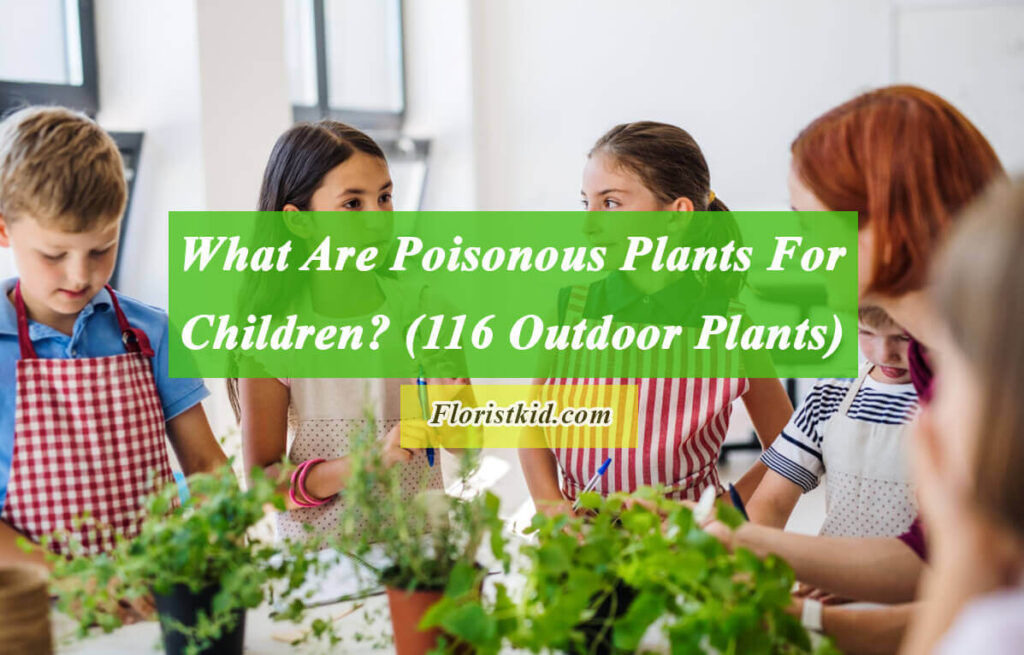Sweet peas (Lathyrus odoratus) are bright, fragrant, and simple-to-grow plants which can fit into any garden setting. However, even with all of these benefits, you must be careful when dealing with this plant as it is poisonous to humans and animals.
The characteristics, history, and toxicity of sweet pea plants for both humans and animals are all covered in this article.
If you are interested in this topic, you can also read
<<Is Cyclamen Poisonous?>> and <<Are Morning Glories Poisonous? >> articles.
About Sweet Peas
The annual climbing plant Lathyrus odoratus, sometimes known as the sweet pea, has winged stems and is grown for its fragrant, enticing blossoms. Sweet pea blossoms are arranged in clusters of up to four at the tops of robust stems that extend over the leaves. Their color range from red, pink, purple, and mauve to white.
The sweet pea’s leaves are pinnate, with two leaflets and a terminal tendril that twines around supporting plants and objects to aid the sweet pea in climbing. The fruit is made up of 2.5 inches long, hairy pods that turn from green to brown when ripened and contain numerous globular, dark-brown to black seeds [1].
Sicily, southern Italy, and the Aegean Islands are home to sweet pea plants. Francisco Cupani’s papers from 1695 contain the earliest known documented mention of the sweet pea plant. The seeds were eventually given to a botanist at the medical school in Amsterdam, who later published a study on sweet peas with the first botanical drawing [2].
Sweet Peas And Toxicity
Amino acids and aminonitriles, which are particularly abundant in sweet pea seeds, can cause many neurologic, musculoskeletal, and blood vessel disorders, generally known as lathyrism.
The amino acid beta-aminoproprionitile (BAPN) is one of the main toxins in the Lathyrus species. This amino acid interferes with lysyl oxidase, a crucial enzyme involved in collagen cross-linking, hence its strength and stability. Blood vessel rupture and sudden death are two possible outcomes of defects in the collagen of blood vessels.
Consuming large quantities of sweet peas’ toxic seeds over weeks can also develop cartilage defects in humans and animals that cause lameness, aberrant gait, and bone discomfort.
Monogastric animals like humans, horses, and to a lesser extent, ruminants develop neurolathyrism, a disease linked to another amino acid called beta-N-oxalyl-amino-L-alanine (BOAA), which, at high enough concentrations, causes excessive excitatory receptor activity in neurons that mimics glutamate toxicity. This could result in irreversible neuron degeneration, weakening the muscles and eventually causing paralysis [3].
Amino acids and nitriles, present in the everlasting pea (Lathyrus latifolius) and common sweet pea (Lathyrus odoratus) seeds, are deadly to people, horses, sheep, cattle, pigs, chickens, monkeys, and elephants.
Since many Lathyrus species contain neurotoxins or lathyrogens, it is reasonable to assume that the entire genus is toxic unless proven differently. Sweet pea seeds or vines should not be fed to animals or birds.
Clinical Signs And Treatment
Horses
Horses with neurolathyrism disease exhibit muscle weakness, a stiff gait, lack of coordination, and trouble standing up after lying down. As long as the animal consumes Lathyrus seeds and hay, the illness will worsen and cause paralysis and chronic neuromuscular degeneration.
It is not uncommon for horses to experience laryngeal paralysis, which is characterized by unique “roaring” breathing noises. When major blood vessels burst as a result of angiolathyrism, sudden deaths could occur.
Ruminants
Muscle tremors, weakness, difficulty walking, and recumbency are symptoms of lathyrism in ruminants. Other neurological disease symptoms in sheep could include circling, head pressure, Abdominal pain, and seizures. If the sweet peas seeds and hay are not consumed over an extended period of time, animals usually recover.
Poultry
A variety of neurologic symptoms, such as twisted or distorted necks, convulsions, ruptured arteries, big deformed eggs, and reduced egg production, may appear in chickens, ducks, turkeys, and other birds that consume the sweet peas’ seeds.
Human
In some regions of the world, where the seeds of the Lathyrus species are devoured in large quantities during times of famine and drought, lathyrism is a severe issue among human populations. At first, they have leg weakness and difficulty walking. After that, this muscle spasticity can cause a person to be completely incapacitated and unable to walk.
Treatment consists primarily of supportive care and eliminating annual, perennial peas from the diet. Mild cases will recover, but the neurological damage in chronically poisoned animals is irreversible.
Frequently asked questions (FAQ)
Can you eat Sweet Peas?
No, you should not eat sweet peas. Sweet peas (Lathyrus odoratus) are poisonous to humans and children. Accidental intake does not result in poisoning. However, consuming too many seeds is harmful.
Unfortunately, In some regions of the world, due to high protein content of Lathyrus plants, which ranges from 25% to 75%, many species of the genus Lathyrus are employed in human and animal diets [4].
Are Sweet Peas Poisonous To Dogs?
Yes, sweet peas (Lathyrus odoratus) are poisonous to dogs. Accidental intake, on the other hand, does not result in poisoning.
Are Sweet Peas Poisonous To Cats?
Yes, sweet peas (Lathyrus odoratus) are poisonous to cats. However, accidental intake does not result in poisoning.












